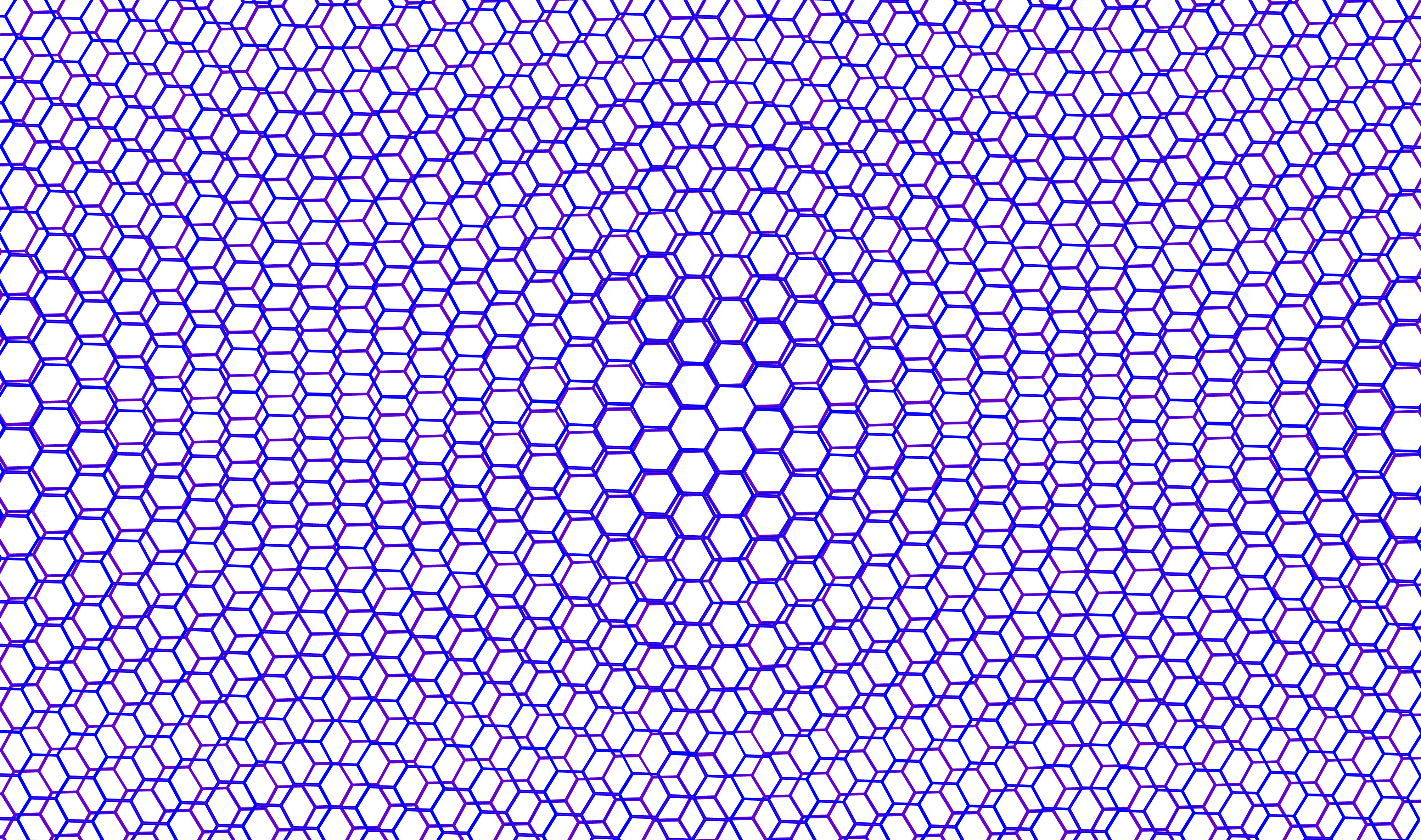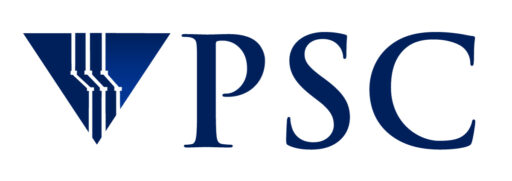
Twisted 2D material bilayers, consisting of two atom-thick layers on top of each other, can form alignment patterns that convey different electrical and heat conducting properties.
Report in Science Today: Mis-Aligned, Atom-Thin Sheets Predicted by Bridges-2 and Seen in New Microscope Point Way to Better Electronic Devices
Twisted 2D material bilayers, consisting of two atom-thick layers on top of each other, can have different electrical and heat conducting properties when the layers are rotated. Using PSC’s flagship Bridges-2 system and the National Center for Supercomputing Applications’ Delta in a dialog between computer simulation and microscopic imaging, a team from the University of Illinois reported today how, for the first time, they directly observed atomic vibrations stemming from the angle of the misalignment. This phenomenon can affect the thermal vibrational behavior of the atoms, and may be useful in designing new, more heat-resistant electronics.
WHY IT’S IMPORTANT
If you’ve ever looked at a smartphone or computer screen through polarized sunglasses at just the right angle, the image blacks out. That’s because the light coming from a flat LCD screen is polarized. When the polarization angle of that light hits the polarization angle of the glasses just right, the light can’t get through.
Nature is full of instances where a simple twist can change the picture dramatically. One of these, whose behavior is even stranger than that polarity trick, is a set of substances called twisted 2D materials, or twisted bilayers. These are made by layering a sheet of atoms atop another identical layer at an angle. For example, when sheets of tungsten diselenide (WSe₂) are aligned perfectly, the atoms of each layer lie directly over one another. But when you twist them, even by a degree or so, you get a pattern of alignments, with some atoms in line and others displaced.
“Imagine you have a two-dimensional material like a layer of atoms. You take a second one and you [twist] it … You get this super-pattern forming. It’s called a moiré superlattice … you have regions where the atoms of both layers are right on top of each other … and then in the middle … you have regions where in the two layers the atoms are offset from each other … They’re kind of important.”
— Elif Ertekin, University of Illinois

That pattern matters, because as the alignment of the atoms in each layer changes, those atoms’ vibrational energy can either build on or interfere with each other. They can form moiré phason modes, soft and squishy regions in the material that can help prevent the transport of heat. This makes these regions super-efficient at thermal insulation — preventing heat from moving through and out of the material. These properties make twisted bilayers and their phason modes promising both for a number of practical applications. These include creating new, more efficient heat protection for satellites and spacecraft, insulating windows in houses, and miniaturizing electronic components that won’t melt under the heat of their own operation.
Pinshane Huang, an associate professor of materials science and engineering at the University of Illinois, wanted to use a new, ultra-precise microscopy technique called electron ptychography to image the moiré phasons in WSe₂. Her goal was to learn exactly how atoms in the twisted bilayers vibrate as a result of thermal fluctuations arising from their interaction with the surrounding environment.
To understand these images more completely and to generate questions that could be answered by her measurements, she partnered with Elif Ertekin, associate professor of mechanical science and engineering at the University of Illinois, and a specialist in molecular dynamics computer simulations of materials. Ertekin, whose lab has conducted many such simulations of promising materials, uses PSC’s flagship Bridges-2 supercomputer and the National Center for Supercomputing Applications’ Delta system for her work. She obtained time on both systems through ACCESS, the National Science Foundation’s network of supercomputing resources.
HOW PSC HELPED
Electron ptychography can image objects so small that individual atoms can be seen. Even better, its resolution is in theory good enough that scientists can use it to measure atoms’ vibrations. In effect, it creates a time-lapse image showing the atoms’ movements.
“Mapping phasons in moiré superlattices requires exceptional spatial resolutions enabled by electron ptychography. This computation-aided microscopy technique relies on high-performance computing to achieve the resolution needed for thermal vibration mapping. Thanks to the computational power of NCSA Delta, we drastically reduced reconstruction times and accelerated optimization of reconstruction parameters. Comparison with simulations validated our experimental observation. This allows us to map thermal vibrations atom by atom, which is a breakthrough that wouldn’t have been possible without such advanced resources.”
— Yichao Zhang, University of Illinois
Yichao Zhang, now an assistant professor at the University of Maryland but then a post-doctoral researcher in Huang’s group, used the Delta supercomputer to reconstruct atomic images from data from the electron microscope. To understand the movements, they would need to know what telltale signs to look for in the time-lapse. Here previous theoretical research would be their guide, in combination with simulations of the atoms’ behavior in Bridges-2.
Bridges-2 is Ertekin’s go-to for such molecular dynamics work. The system combines three strengths to support a variety of the simulations that her lab conducts.
For crunching the complex equations governing atomic vibrations, Bridges-2 offers 1,008 parallel regular memory, or RM, central processing units (CPUs). These allow difficult computations to be broken up into little pieces that can rapidly be processed at the same time.
Some calculations require the computer to remember large molecular structures and data. To make it unnecessary for the computer to make many time-consuming trips between storage and processors, Bridges-2 offers RAM memories of 246 or 512 megabytes in its RM nodes. In addition, it has a monster 4,000 MB of RAM in four extreme memory nodes.
Finally, Bridges-2 has 360 high-powered graphics processing units (GPUs). These accelerate image processing, as well as other calculations that naturally separate into many, many parallel tasks.
“We rely on Bridges-2 a lot for the work in our group … We do all sorts of atomistic simulations, sometimes at the quantum level of theory and sometimes classical. In this work we used classical molecular dynamics simulations, which show the time dynamics of atoms vibrating. So [we are] using Bridges to help us integrate equations of motion, to tell us microscopically about the way that materials behave, and why they behave the way that they behave more or less directly from solving fundamental equations … And it would be really hard to do the things we do without Bridges.”
— Elif Ertekin, University of Illinois
Thanks to the dialog between Bridges-2’s simulations and the microscope’s images, Huang and Ertekin were able to show for the first time how, when the two layers were twisted by small angles, phason patterns dominate the thermal vibration patterns of the atoms. In the other parts of the material, the atoms vibrate randomly. In the phason areas, they vibrate only in the direction of the pattern.
This phenomenon had been predicted by theory but never before seen directly. This was because the computations needed to resolve the atomic vibrations at a resolution of less than 15 picometers. That’s about a billionth of an inch, which was impossible to achieve before the current work.
The result also shows why these materials are so good at thermal insulation and offers an important clue as to how such materials will behave in future electronic devices.
The team reported their results in an article in the prestigious journal Science today. Their results demonstrate that electron ptychography is a powerful method for directly measuring the behavior of materials at the tiniest scales, allowing scientists to see for the first time these types of atomic vibration and study how they govern materials’ behaviors.
